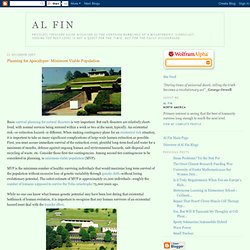

Reinventing Space Settlements. IntroductionIt is more than two decades since the publication of Gerard O'Neill's "High Frontier" in which he laid out his vision for a more hope-filled future based on access to virtually unlimited solar energy supplies in space, tapped by giant solar power satellites, built affordably, with materials from the low-gravity Moon.

But this was only half his vision, and as captivating as it was to many, it was the other half which lured most to join the Space Studies Institute and the L5 Society in their complementary approaches to the task of making Dr. O'Neill's vision a near term reality.The other half, of course, is the vision of a growing number of space habitat oases to house the workers who would actually build the solar power satellites. These were the "space colonies", later amended to "space settlements" in an effort to be politically correct. We've said all this before, in MMM # 13, MAR '88, "SPACE OASES" Part 6. Back at Square One: Baby Steps with Artificial Gravity". O'Neill cylinder. Artist's depiction of a pair of O'Neill cylinders The O'Neill cylinder (also called an O'Neill colony) is a space settlement design proposed by American physicist Gerard K.

O'Neill in his 1976 book The High Frontier: Human Colonies in Space.[1] O'Neill proposed the colonization of space for the 21st century, using materials extracted from the Moon and later from asteroids.[2] Interior view, showing alternating land and window stripes Background[edit] While teaching undergraduate physics at Princeton University, O'Neill set his students the task of designing large structures in outer space, with the intent of showing that living in space could be desirable.
O'Neill's project was not completely without precedent. Islands One, Two and Three[edit] O'Neill created three reference designs, nicknamed "islands": Island One[edit] Island Two[edit] Island Two is also spherical in design, and is also 1,600 meters in diameter. Island Three[edit] Design[edit] Artificial gravity[edit] Home - ECHO. Planning for Apocalypse: Minimum Viable Population.
Basic survival planning for natural disasters is very important.

But such disasters are relatively short-lived, with normal services being restored within a week or two at the most, typically. An existential risk--or extinction hazard--is different. When making contingency plans for an existential risk situation, it is important to take as many significant complications of large scale human extinction as possible. First, you must assure immediate survival of the extinction event, plentiful long-term food and water for a minimum of months, defense against ongoing human and environmental hazards, safe disposal and recycling of waste, etc. Consider those first-tier contingencies. MVP is the minimum number of healthy surviving individuals that would maximise long term survival of the population without excessive loss of genetic variability through genetic drift--without losing evolutionary potential.
Technology for autonomous land vehicles, ships, and planes is developing rapidly.
Space travel. Psicología. Watch free documentary films & videos. Mapping & Cartography. Malaria Maps.